Casa Aya Medina – Fes Medina
Morocco’s cultural and spiritual center, Fes is an outstanding example of a medieval town created during the first centuries of Islamisation in the country – which is why it is part of the UNESCO world cultural heritage. Narrow lanes flanked by high brick walls meander throughout the medina (the old part of the town, called Fes-el-Bali). There’re nine thousand dwellings in the medina and no fewer than four thousand lanes and blind alleys. Casa Aya Medina guesthouse stands in the western part of the medina, at a walking distance between Talaa Kebira (the main shopping pedestrian street) and Bab Ain Azletin (one of the entrance gates to the walled old town).
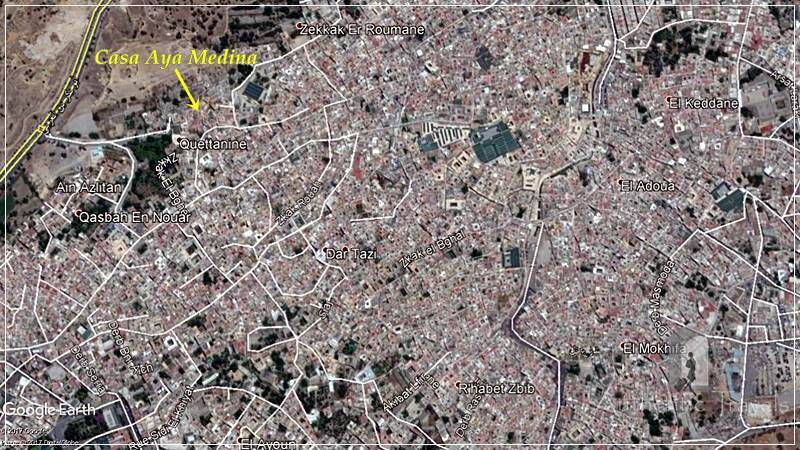
Once you walk down Ain Azletin street, take care not to bump your head as you pass under a low archway. You then enter a narrow lane (called Derb Benadada), less than one meter in width, with a few doors and windows randomly placed. A few children might play football in this tight place, and you might get a ball smashed into your face. Don’t bother about that! Walk ahead, and you’ll find a simple door entry at the end of a zigzag blind alley, where you’ll never guess what lies behind. Never mind, the old configuration of the urban tissue will discretely reveal the neighborhood’s authentic secrets to you.
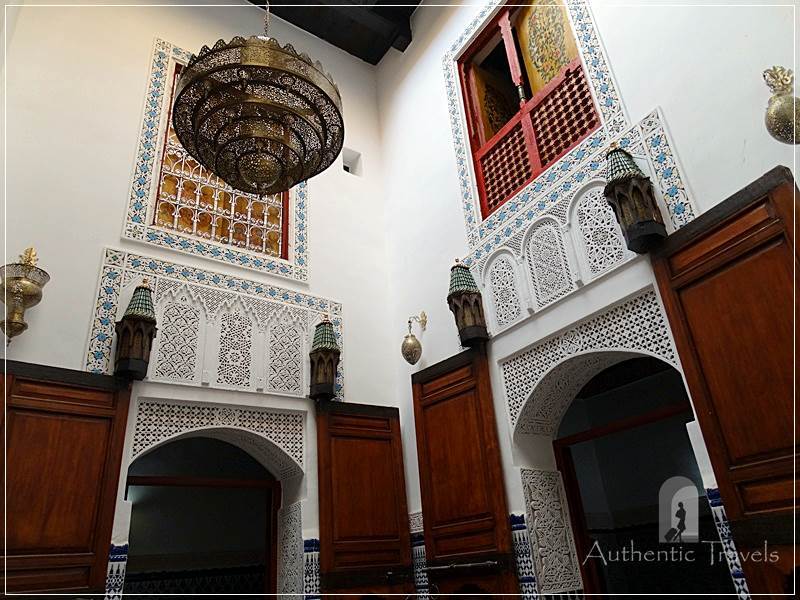
Casa Aya Medina – the Dar (the house)
When you enter the guesthouse, you step into a long L-shaped corridor at the end of which lies an inner courtyard. You are in a traditional Moroccan house, called dar (a modest version of a riad – the traditional Moroccan house for wealthy families). An old fountain decorated with colorful mosaics (called zellij) stands on one side of the inner courtyard. It was once a larger fountain, but it suffered transformations during the restoration works, and the dar gained more space for a new dining room in the patio. On the opposite side of the fountain, a traditional family salon (called taklidi) and a luxury matrimonial room open up onto the courtyard (called bahn). Close to the main entrance, a staircase goes upstairs to the next floors where the private rooms are.
All rooms open up onto the inner courtyard as a result of the Islamic architecture principles. The main idea is to minimize the impact of heat and direct light and provide ventilation to the interior spaces. Originally open-air, the courtyard has been covered with a glass skylight and gained a new modern look.
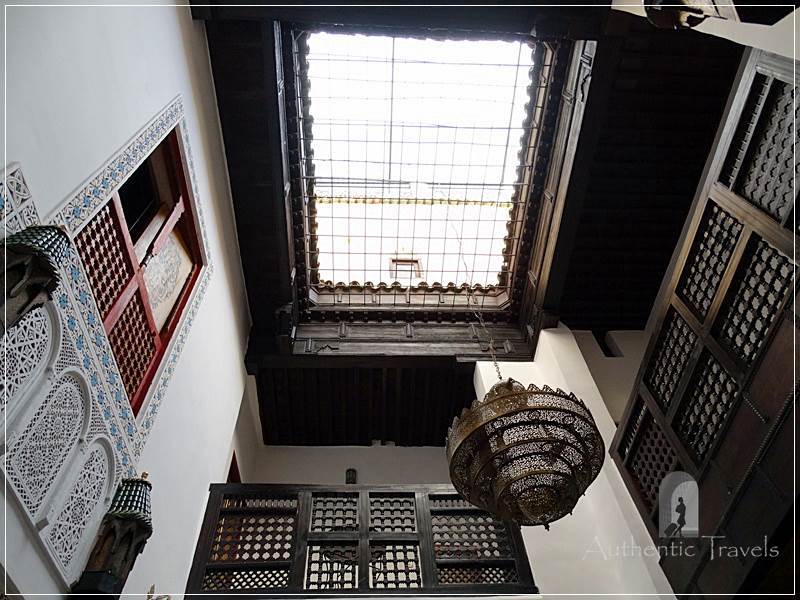
In Morocco, many people work out on the street no matter what they do – from selling something to woodcarving and loom weaving. Unlike the exterior of the house – that is a working space, the interior of a traditional Moroccan house is like heaven – not only for women who might be without the constraints of clothing, but also for its rich decorations. Door and window frames feature stucco plaster decorations of hand-painted multi-colored arabesques. The door thresholds have finely and richly colored mosaics. The inner doors and shutters are of solid cedar wood from the Middle Atlas Mountains, and some of them even have painted colorful drawings.
Casa Aya Medina – Interior Design
All rooms for guests are on the upper floors, two rooms per floor. The modern rooms look out to the collective patio, but also offer privacy inside. Each room has two to three beds and a private bathroom. Wooden shutters (called mucharabian) create privacy for these rooms, but once you are inside, you can still see what is happening downstairs in the collective courtyard. Most rooms feature traditional motifs, from cactus silk curtains and bedspreads to old painted cedar furniture and handmade Berber carpets. The recently restructured bathrooms have sinks with traditional mosaic (called zellij). And the ceiling of each room is cedar painted with geometric or floral designs.
The top-floor terrace was once for drying the laundry – an occasion for women to meet up and socialize. Nowadays, it is an outdoor dining area grouped around the last level of the inner courtyard. A green pergola covers the terrace overlooking the mosque and the old furniture bazaar (called souq) in the Ain Azletin neighborhood.
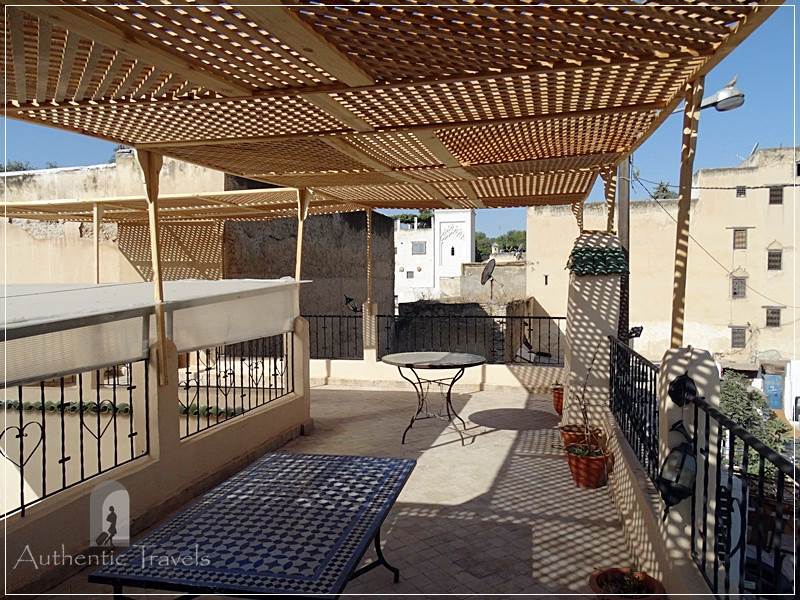
Casa Aya Medina – Personal Experience
The co-owners of Casa Aya Medina, Fouad and Milouda el-Ouazzani, had just completed the restoration works when I visited them in the autumn of 2015. After they completed several local consolidations, it didn’t feel you were in a seven-hundred-year-old house. I explored every corner of the house with great curiosity. The configuration of the house and the careful interior design transposed me into another world. Birds were chirping on the upper terrace every morning. The call-to-prayer echoed throughout the medina five times per day. And from my room, I saw the breakfast preparations and felt the smell of mint tea poured with white foam into small glasses. For three days, I lived in an authentic Moroccan palace, like a queen.
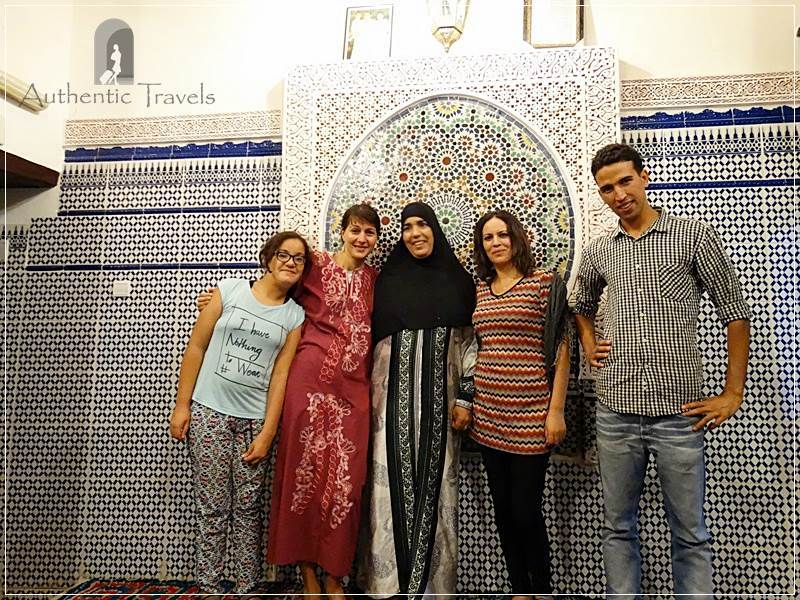
Every morning, I was impatient to start my day. I pulled on my shoes with excitement and ran downstairs. In the inner courtyard, I had a quick breakfast and rushed out to the street. I was ready to explore the old medina in Fes.
Casa Aya Medina can be found on booking, tripadvisor, and their website.
Some more photos from Casa Aya Medina:
If you want to read more about the road trip through Morocco, here are all the Travelogues from Morocco (x21).
Have you been to Morocco or plan to go there? Leave a comment below this post and tell me what you liked in Morocco or what you want to see there.
Want to subscribe to my travelogues? Just leave your email in the subscription form below and you’ll be notified when I publish a new post.

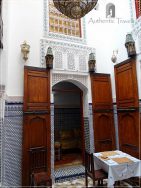
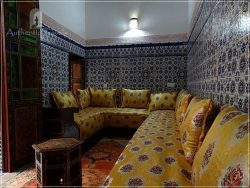
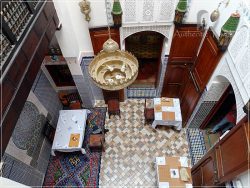
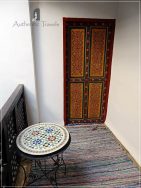
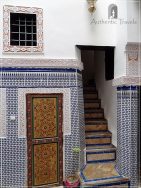
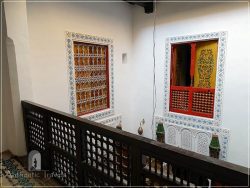
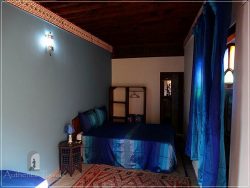
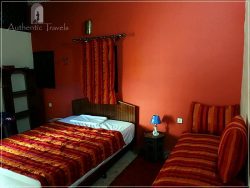
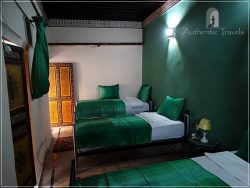
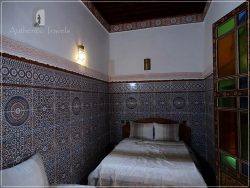
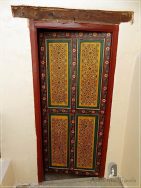
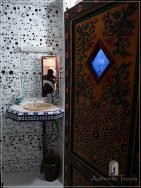
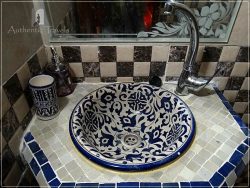
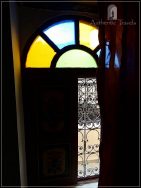
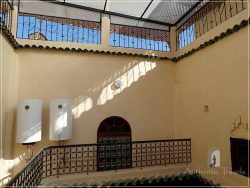
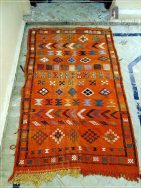
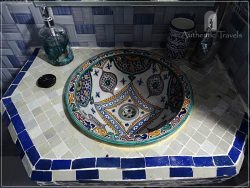
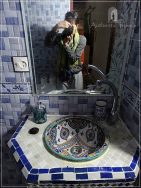
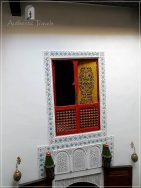
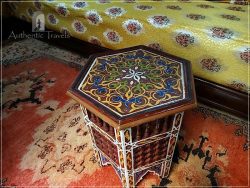
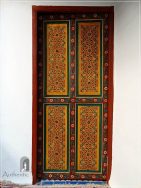
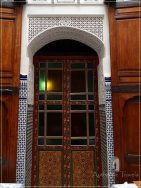
Very nice house and indeed very traditional. If I’ll ever go to Fez, I’ll definitely wish to stay there. Thanks for sharing this information with us.
I strongly recommend you this traditional dar. It was very well restored and it’s very peaceful place.
Can;t believe we never made it to Morocco yet! Such an amazing place!
We hope to get to visit soon. Wish the photos were a bit bigger.
I recommend you the place. 🙂 If you click on the photos they will be bigger, and if you click them on the right up corner you will be able to see them at full size on all the screen. 🙂
Very well-researched and written! I wish the images were larger in size – there is so much detail to see in those!
Thank you for your comment. You can just click the images and suddenly they will be bigger. 🙂 I uploaded them at 1200×800, so I thought also at the details needed in the photos. I hope you’ll like them. 🙂
Hi Iuliana! Wow, what a beautiful place and such beautiful pictures! I feel like going there right away! I have only been once to Morocco while I was working on a cruise ship (we stopped in Casablanca) and really enjoyed it! It’s a different world! What do you think about travelling to Morocco with small kids (mine are almost 3 and 4)? Greetings from Austria, Martina
You can go with the kids in some short trips in the mountains. Or they’ll enjoy a ride with the camels. You can check out also my article on the camel desert trekking and choose a shorter trip for the kids. They’ll feel like Berber nomads on the camels. 🙂
What a beautiful house! My partner spent one year in Morocco before we met and he absolutely loves it there. The culture, the smells, the architecture. I’m very curious to go there one day!
I strongly recommend you this guesthouse. They restored it recently and it preserved very well the traditional architectural feature. A former architect speaking here. 😉
What a fantastic place! And it’s so authentic and perfectly what I’d want to experience in Morocco. I love that the local crafts are what furnishes the hotel.
You will also hear the birds singing up on the terrace in the morning. I don’t write reviews for everything, but this one I strongly recommend.
Funny that I’ve read this before and now have thought “What a wonderful place and it’s so perfectly Moroccan.” I guess I’m meant to be there.
The architecture is just stunning. The colours and patterns too having me wanting to visit more and more!
You are right. All the colorful decorations are welcoming everybody.
The place captures the spirit of the architectural heritage of Morocco. Some of the inlay work visible in the pictures are really exquisite.
You are right. I was fascinated by this place: so typical and representative for Morocco.
Fez does sound like a lovely cultural experience. Hope that I can see it for myself some day and soon. 🙂
I am sure you will have the chance to see it. Fez is a real cultural experience lost in time.
I’ve never been to Fez but have heard it is a very authentic part of Morocco. Less touristy than Marrakech. This riad looks like a great place to stay.
I liked both Fez and Marrakesh as well. They are similar but yet so different. You’ll have to see them both and decide yourself which one you like most. It’s permitted to like both of them. 🙂